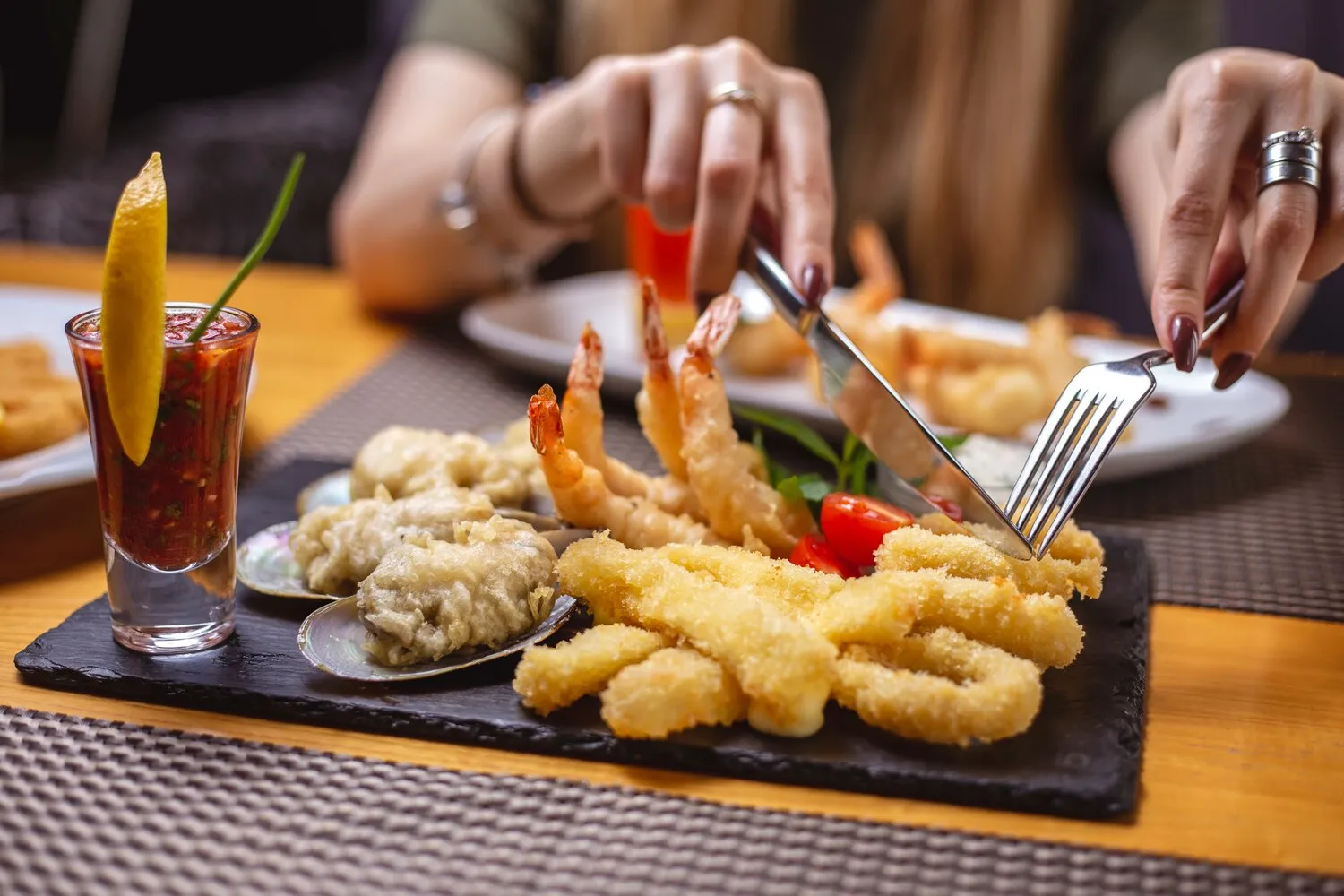
Self-service Buffet
Variety of brazilian cuisine.
Nutrition Facts
* The % Daily Value (DV) tells you how much a nutrient in a serving of food contributes to a daily diet. 2,000 calories a day is used for general nutrition advice.
Brazilian cuisine is a melting pot of Indigenous, European (primarily Portuguese), and African influences. Colonization, immigration, and the slave trade all played significant roles in shaping the dishes and ingredients used today. The self-service buffet, known as 'Comida por Quilo' or 'Buffet Livre', reflects this diversity, allowing diners to sample a wide range of flavors and regional specialties in one meal.
The self-service buffet is a popular and practical dining option in Brazil, reflecting the country's emphasis on hospitality and sharing. It's often a communal experience, allowing individuals to customize their plates and sample a variety of dishes.
Accessibility and Affordability
Buffets, particularly 'Comida por Quilo' (food by weight), offer an affordable way to try different dishes and control portion sizes. This accessibility makes them popular for lunch among working professionals and families alike.
Regional Diversity
Buffets often showcase the vast regional diversity of Brazilian cuisine, including dishes from the Amazon, Bahia, Minas Gerais, and other regions. Diners can experience different culinary traditions in one place.
Social Gathering
Buffets are a common choice for social gatherings and informal meals, providing a relaxed atmosphere for people to connect and enjoy food together.
Pragmatism
The buffet system allows for a quick and efficient meal, appealing to the fast-paced lifestyle of urban Brazilians. It minimizes waiting time and allows diners to choose exactly what and how much they want to eat.
Brazilian cuisine offers a vibrant mix of sweet, savory, spicy, and tangy flavors. The use of fresh ingredients, tropical fruits, and aromatic herbs creates a unique and satisfying culinary experience.
Common flavors include the earthy notes of black beans, the rich taste of various meats (beef, pork, chicken), the sweetness of tropical fruits like mango and passion fruit, the tang of lime, and the heat of chili peppers. Garlic, onion, parsley, and cilantro are widely used for seasoning. Many dishes feature dendê oil (palm oil), especially in Bahia, providing a distinct flavor. Brazilian cuisine also incorporates various types of cheese, rice, beans, and farofa (toasted cassava flour).
Explore Before You Load
Take a walk around the buffet to survey all the options before filling your plate. This will help you make informed decisions and avoid overfilling your plate with less desirable items.
Balance Your Plate
Aim for a balanced plate with a variety of proteins, carbohydrates, vegetables, and salads. Don't be afraid to try small portions of different dishes to discover new favorites.
Beware of Fried Foods
Brazilian buffets often include fried snacks and pastries. While tempting, these can quickly add up in calories and fat. Choose a few favorites and enjoy them in moderation.
Don't Underestimate the Rice and Beans
Rice and beans are a staple in Brazilian cuisine and are usually very well-prepared. They provide a comforting base for your meal and complement other dishes perfectly.
Try the Condiments and Sauces
Explore the selection of condiments and sauces, such as hot sauces (molhos de pimenta), vinaigrettes, and farofa. These can add extra flavor and complexity to your meal.
Explore additional Variety dishes and restaurants
Explore VarietyDiscover top dining spots and culinary experiences in Juiz de Fora.
Explore Juiz de ForaLearn more about the food culture, restaurant scene, and culinary heritage of Brazil.
Explore Brazil